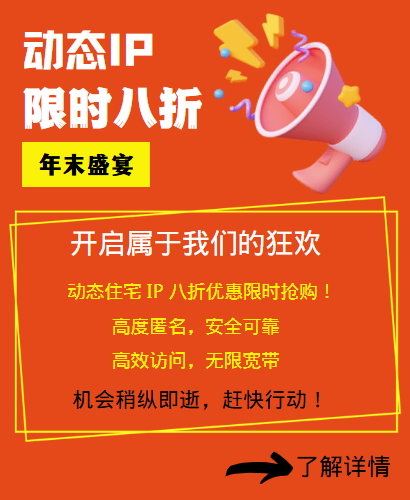The proxy server supports two authorization methods, namely terminal IP authorization and username and password authorization. You can choose either of the two authorization methods, which is very convenient. Many novice friends often encounter some problems when using the proxy server to choose these two authorization methods. Let's take a look.
1. Terminal IP authorization: The most common problem with terminal IP authorization is "I can extract the proxy IP, but no proxy IP can be connected." There are many reasons for this problem, which are summarized as follows:
1. The public IP of the terminal using the proxy is not bound.
2. The LAN IP of the terminal using the proxy is bound.
3. The public IP of the terminal using the proxy has changed.
4. The terminal using the proxy does not have a fixed export IP, but a multi-export IP.
2. Username and password authorization:
1. Username and password authorization is not performed when using the proxy IP
2. When using the proxy IP, the password is encrypted with MD5 (no encryption is required).
3. When using the proxy IP, the username and password for website login are used as the username and password for the proxy IP, which is actually the instance ID and the 8-digit product password.
4. When using the proxy IP, the https protocol is used incorrectly.
The above are some common problems encountered in the two authorization methods of the proxy server. I hope it will be helpful to everyone.
Related Recommendations
- What is the role of foreign static IP?
- Why are SOCKS5 agents safer? In-depth comparison of protocol layers
- Shopify store operations: proxy IP ensures smooth access and data security
- Avoid IP blocked and improve social media marketing effectiveness
- How to use PHP to detect proxy anonymity levels
- Reasons why you need to switch IP when registering multiple Facebook accounts
- What are the benefits of setting up SOCKS5 agents in Windows11?
- The difference between tunnel HTTP proxy and forward HTTP proxy
- Function and Application of Proxy IP in Generating API Link
- What are the advantages of dynamic IP

